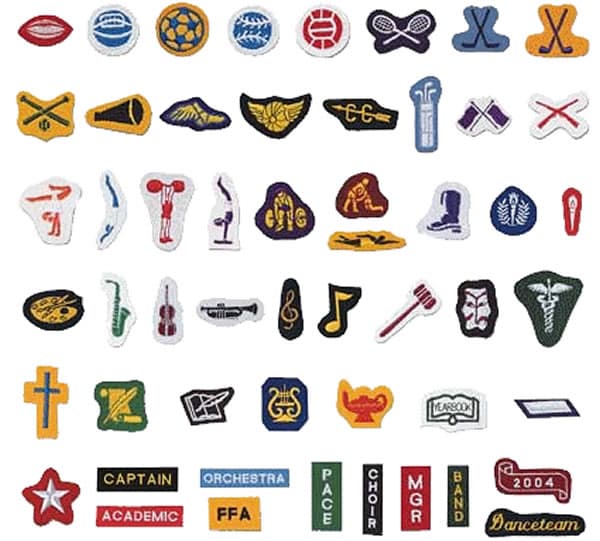The dinner table was once upon a time the unquestioned gathering place for families. As a kid it was an unwelcomed, yet required, interruption to the most important part of my day—play time. Hearing your name cascade across the neighborhood airwaves, followed by “time for dinner” was as demoralizing as the final horn in a game you trailed by one point. We just needed five more minutes! Like going to school or church on Sunday, stopping for the family dinner was non-negotiable.
As our lives moved on to the freeway, we added more to our social and business plates and slowly put our dinner plates away. Kitchen tables became a gathering place for mail instead of family members.
It has always been right there in front of us. A simple, yet powerful act that is today so underutilized.
I have often been asked where my favorite place to be is and for a long time I responded Lambeau Field watching the Packers or at a hockey rink coaching. Both give me great pleasure, but as the pandemic confined us, and my empty nest filled back up, I was reminded of the place I love the most, the family dinner table. I realized just how much I had missed those long meals filled with the storytelling of family lore and the laughter of our daily life events. Almost imperceptibly, like breast milk is to a newborn baby, the dinner table is where moral values, instead of antibodies, are passed on to your children.
The country music group Lonestar sings a favorite song of mine with the lyrics, “the view I love the most is my front porch looking in” and for me it is my dinner table filled with family and friends. It is where our family shared our daily triumphs, failures and life lessons learned without fear or hesitation. It was a safe place to tryout opinions, share ideas and talk about dreams. We met their friends, adopted them into our family and they learned how to have adult conversations. One of the positive consequences of the pandemic has been putting families back together at the dinner table.
The statistical evidence supporting the benefits of the family meal is staggering in both their volume and impact. Having raised five kids I completely understand what a risky and uncertain science it is. Coaching is no different and both come with no guarantees for success. I have witnessed parents I thought did everything right, but had children who seemed to do everything wrong. I now understand there is an element of luck involved. When we discover an act as basic as sitting down to eat together can tip the scales so dramatically in our favor, I have to wonder why anyone would ignore it.
It is a common sense fix that is available to all of us. It is a concept we have all implemented with our teams as a way to create that family atmosphere we all crave. The team dinner is a tried and true staple of every athletic program. In high school we often cram them all into somebodies undersized house where some eat at make-shift arrangements much like the children’s table at Thanksgiving. While they are fun and hectic gatherings, I always found that the players tended to spend most of their time with same player groups. It wasn’t helping to build relationships that currently did not exist.
Drawing from my 3D coaching knowledge I decided to try and take this valuable experience and align it more closely to the family dinner. My goal was to achieve similar results. We created “The Dinner Club” and like most new ideas it was met with a strain of resistance and doubt. The idea was to break our team up into more manageable groups of four or five and send them to teammates houses to sit down and have dinner with their family. As coaches we decided where to send players so we could group them with teammates they wouldn’t normally socialize with away from the rink.
Players spent quality face-to-face time with teammates in a setting where normal conversations could occur. They learned about their teammates families and houses, got a tour of their rooms and invaluable insight into their lives. They discover the similarities they may have with teammates and more importantly the differences. Enriching team unity is one of the building blocks of the 3D model and this provided an opportunity to achieve that by strengthening and widening the team’s relationship web.
The results were fantastic.
Beyond that dinner date, it sparked a hot topic of discussion at practice the next day when meals and desserts were compared and dissected. The friendly menu competition between houses made for our own version of Chopped with unofficial bragging rights to the winner. Ultimately it was a win for everyone.
The unexpected benefit was the positive reaction from the parents. They found that they enjoyed getting to know more about the personalities of their child’s teammates in the comfort of their own homes. It was an opportunity for them to see them as the dynamic, yet vulnerable teenagers they are and not just a right wing or defenseman. We all know making that personal connection can vividly change the opinion for someone based on a lack of evidence. Whether they discovered them to be funny, shy, smart, loud or polite they now had a more human view of them. I implore our parents to adopt all of the players on the team and this is their opportunity to take a meaningful step toward that goal. It was difficult to determine who enjoyed it more, the players or the parents.
It is challenging as a coach to find meaningful and benign ways to connect parents to the team. It can be a walk on the tightrope without a safety net. Many parents desperately want to be involved in any way you will allow. Most of the interaction between parents and players other than their own consists of “nice game” as they walk by after the event. When we can attach a personality and some insight to the person under the jersey, we open up the possibility to expand and enhance the relationship.
Comedian Jim Gaffigan pokes fun at our eating habits and the regularity and adoration of our indulgence, but the truth is it can be one of the most impactful moments of every day. As mother pandemic calls us in for dinner, let’s hope it serves as a reminder of the value a simple task, like sitting down at the dinner table, can provide our families.
Upon further review, the place I love the most, is my dinner table filled with family and friends.
What’s for dinner?









0 Comments